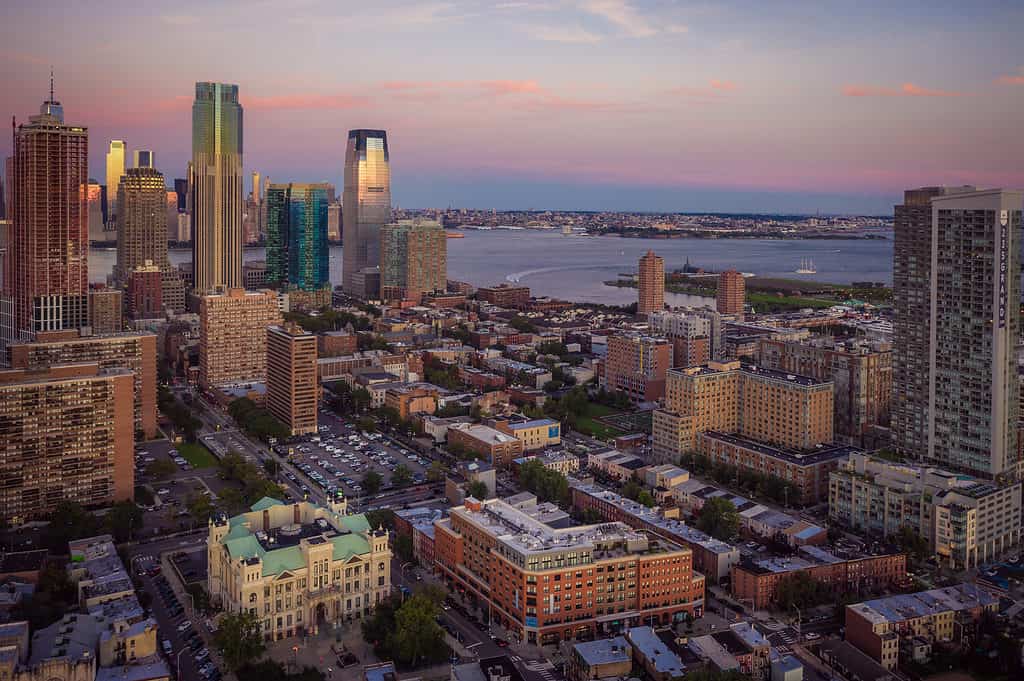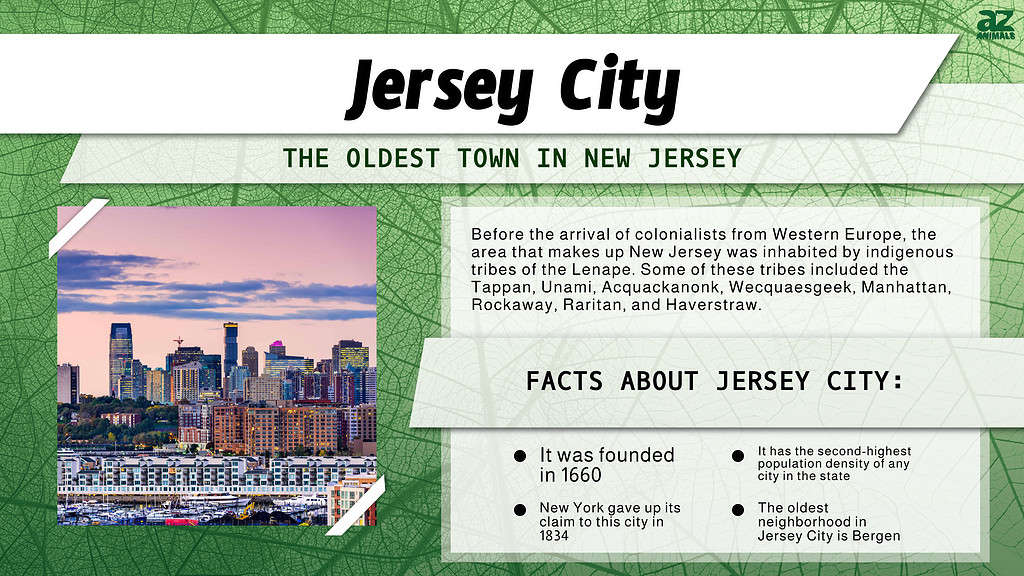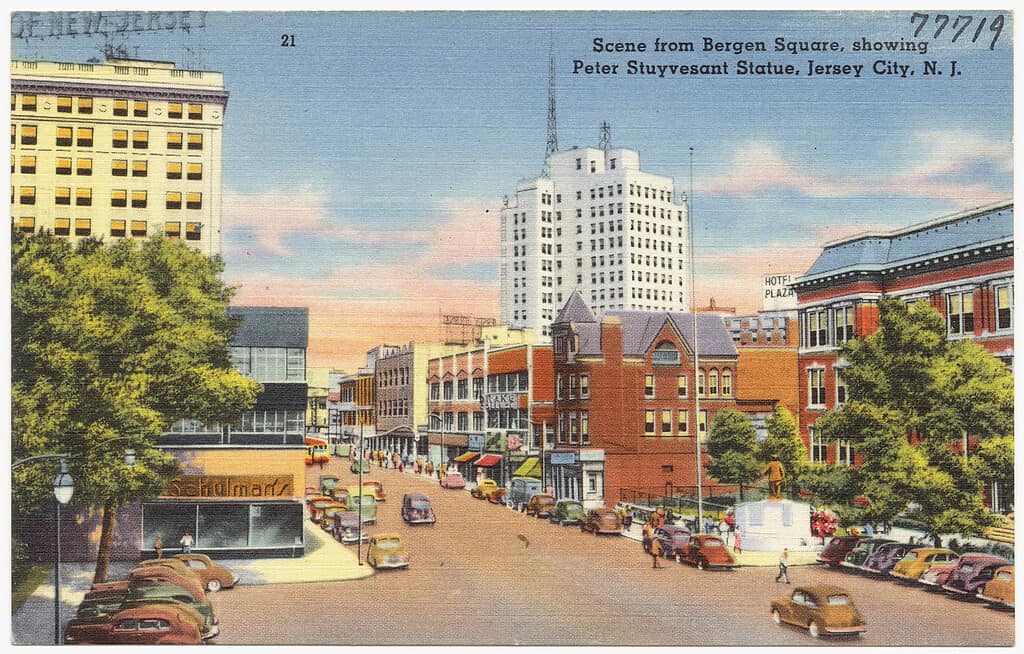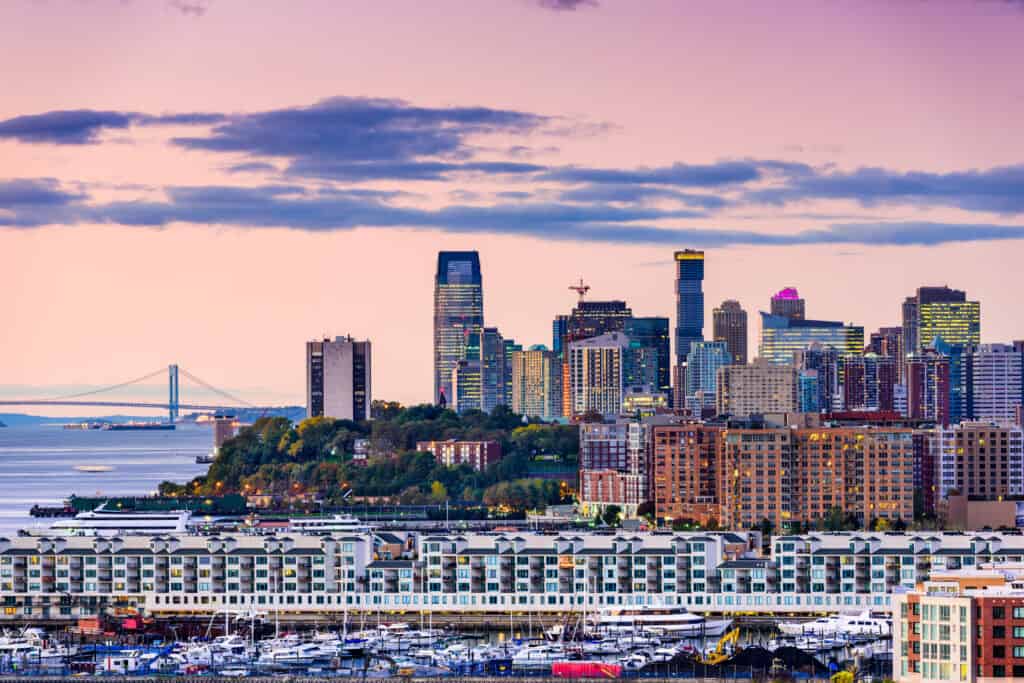The area that now makes up New York and New Jersey were some of the first lands settled by white colonialists in the 1600s. It should come as no surprise then that the oldest town in New Jersey is 116 years older than America itself! Curious as to which town we’re talking about? We’ll talk about the history and some other details of this locale now.
What is the Oldest Town in New Jersey?
The oldest town in New Jersey is Jersey City which was founded in 1660. This means that it is 116 years older than America itself! It is a little more than 21 square miles in size, with about 70 percent of that land being above water.
Jersey City has the second-highest population density of any city in the state. It is also a major banking and financial hub of the United States.
There are almost 20 thousand inhabitants in every square mile of space. It is also a main port of entry for immigrants. This has made it one of the most diverse cities on earth.

It has the second-highest population density of any city in the state.
©FotosForTheFuture/Shutterstock.com
Jersey City: Where is the Oldest Town in New Jersey?
Jersey City is located in the New York metropolitan area. The upper part of New York Bay as well as the Hudson River form the city’s eastern border. The west is bound by Newark Bay and the Hackensack River.
It is easy to take mass transit into Manhattan in New York City from Jersey City. Jersey City is situated right across the river from Manhattan which makes it a popular rental spot for city workers. As a result, the rental prices in Jersey City are some of the highest in the nation.
Tensions between the boundaries of New York City and Jersey City have played out over the years. In 1998, the US Supreme Court gave most of Ellis Island to Jersey City. Jersey City also controls the waters around Liberty Island, which contains New York City’s iconic Statue of Liberty.

History of Jersey City, New Jersey
Before the arrival of colonialists from Western Europe, the area that makes up New Jersey was inhabited by indigenous tribes of the Lenape. Some of these tribes included the Tappan, Unami, Acquackanonk, Wecquaesgeek, Manhattan, Rockaway, Raritan, and Haverstraw.
Henry Hudson, an Englishman, sailed the Dutch ship called Halve Maen up the Hudson River in search of a passage to East Asia. In June 1623, the Dutch province of New Netherland was officially established.
A Dutchman named Michael Reyniersz Pauw purchased Jersey City’s land from the Lenape in 1630. However in 1633, after the area failed to be populated, the Dutch West Indian Company that controlled the province forced him to sell his land back to the company.
Unfortunately, the alliances through sale that the indigenous people struck with Europeans were to their detriment. They weren’t able to retain the hunting and fishing privileges they were promised.
New York and New Jersey quarreled over who owned Jersey City, with New York giving up its claim in 1834. Jersey City was the final destination for one of the 4 major routes of the Underground Railroad.
The Underground Railroad existed in antebellum America and during the Civil War. It helped enslaved people escape to territories that allowed them to be free.
The first drinking water disinfection system in the United States was built in Jersey City in 1908. Railyards became one of the economic heartbeats of the city. Coal contaminants from those days still plague areas like Liberty State Park despite cleanup efforts.
After decades of corruption, Jersey City was a victim of urban decay by the 1980s. In response, the industrial waterfront area was redeveloped. This waterfront, which boasts an unadulterated view of the downtown Manhattan skyline, is now a hotspot for tourists and expensive high-rise condos.
What is the Oldest Neighborhood in Jersey City?
The oldest neighborhood in Jersey City is Bergen. It gained its official charter on September 5, 1661. While Bergen is a part of Jersey City today, it was technically the oldest permanent settlement in the state.
On August 27, 1664, the English showed up in the region demanding that the land be given to their crown. The Dutch rulers weren’t very invested in their colony, and they didn’t provide any weapons or reinforcements. As a result, the leader of the Dutch colony surrendered to the English under the stipulation that the current population be allowed to maintain religious and cultural autonomy.
In its founding year, a ferry was established between Manhattan and Bergen. Today, the exact location of the original village in Jersey City is called Bergen Square.

Today, the exact location of the original village in Jersey City is called Bergen Square.
Where is Jersey City Located on a Map?
Jersey City is located in the northeast region of New Jersey on the western edge of New York City, between the Hudson River and Upper New York Bay across from Lower Manhattan and the Hackensack River. It has areas of waterfront on the east at the Hudson River.
Wildlife You’ll Find in Jersey City, New Jersey
While Jersey City is a major metropolitan hub, it still has a noticeable wildlife presence. Raccoons, finches, American robins, skunks, opossums, pigeons, mourning doves, squirrels, snakes, seagulls, crows, mice, rats, woodchucks, bluejays, and bats are commonly spotted. These wild animals within Jersey City are protected by state law, so it is illegal to harm them or relocate them without the help of a trained professional.

The most common
cockroach
found in Jersey City is the German cockroach.
©IrinaK/Shutterstock.com
Less often, other wildlife not usually associated with urbanization are present in Jersey City. These animals include snowy owls, harbor seals, bald eagles, northern harriers, northern mockingbirds, deer, turkey vultures, Cooper’s hawks, ospreys, black skimmers, and long-eared owls. Seeing birds in the city is easiest at Caven Point inside Liberty State Park, or inside the Lincoln Park Wetlands Restoration.
Because Jersey City is a densely packed urban area, it suffers from pest problems in low-income housing and elsewhere. Around 16 percent of the city’s population lives below the poverty line, and some of the homes of this demographic experience infestations of cockroaches, bed bugs, and rodents. The most common cockroach found is the German cockroach (Blattella germanica), with some American cockroaches (Periplaneta americana), and Oriental cockroaches (Blatta orientalis) also making appearances.
The Hudson River is polluted, however, there is still a sizeable fish population. Species present include striped bass, Atlantic sturgeon, river herring, menhaden, and American shad.
During the 1940s to the 1970s, two plants operated by General Electric dumped PCBs into the Hudson River. This damaged regional wildlife. PCBs are human-created chemicals that are fat soluble, and they most likely cause cancer in high enough concentrations.

During the 1940s to the 1970s, two plants operated by
General Electric dumped PCBs into the Hudson River
. This damaged regional wildlife.
©Sergii Figurnyi/Shutterstock.com
Thank you for reading! Have some feedback for us? Contact the AZ Animals editorial team.








